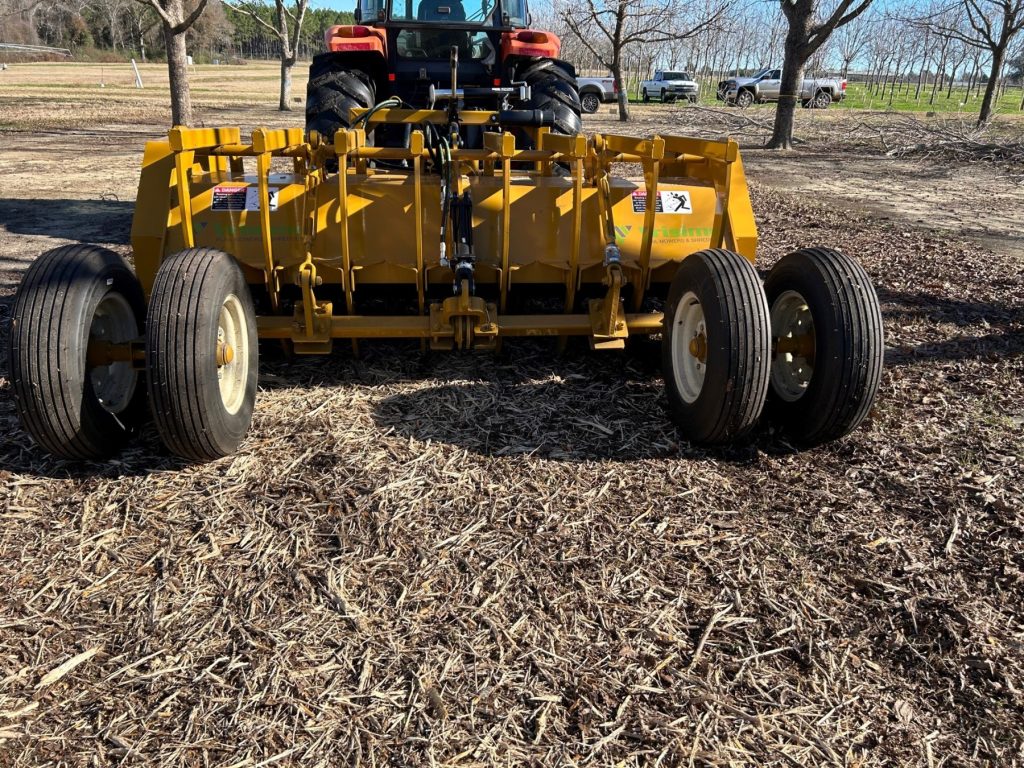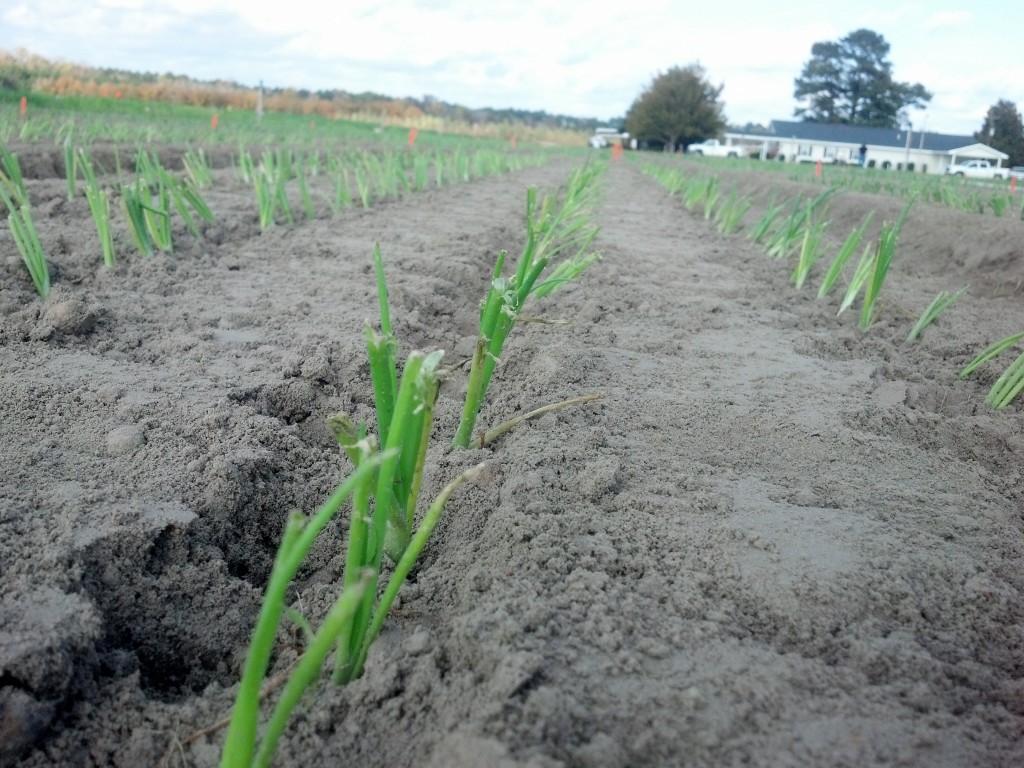The following is from Dr. Lenny Wells, Professor of Horticulture and Extension Horticulture Specialist for pecans at the University of Georgia.
We have been busy over the last week hedge pruning our orchards and research plots at the UGA Ponder Farm near Tifton. Hedge pruning generates a lot of limbs that must be disposed of. This practice is often time consuming and the limbs are piled and burned.

There may be a better way to dispose of limb prunings. When hedging, most of the limbs fall within the tree row middles. Returning these limbs, the organic matter, and nutrients they hold to the soil may help improve soil quality and will help improve the sustainability of pecan production, which, along with the other positive environmental benefits of orchards, can and should be used a marketing tool for pecans (Lord knows we need all the marketing help we can get). However, one of the concerns with this process is whether or not the shreddings will interefere with the harvest process and cause issues in the cleaning plant. I don’t think they will, but we plan to find out.
Western growers have been shredding limb prunings in the orchard and returning the shredded material to the soil for a while now. Many use large, often self-propelled machines that cost hundreds of thousands of dollars. In searching for a low cost tool to accomplish this task, we came across the Vrisimo S900 Brush Flail Shredder.
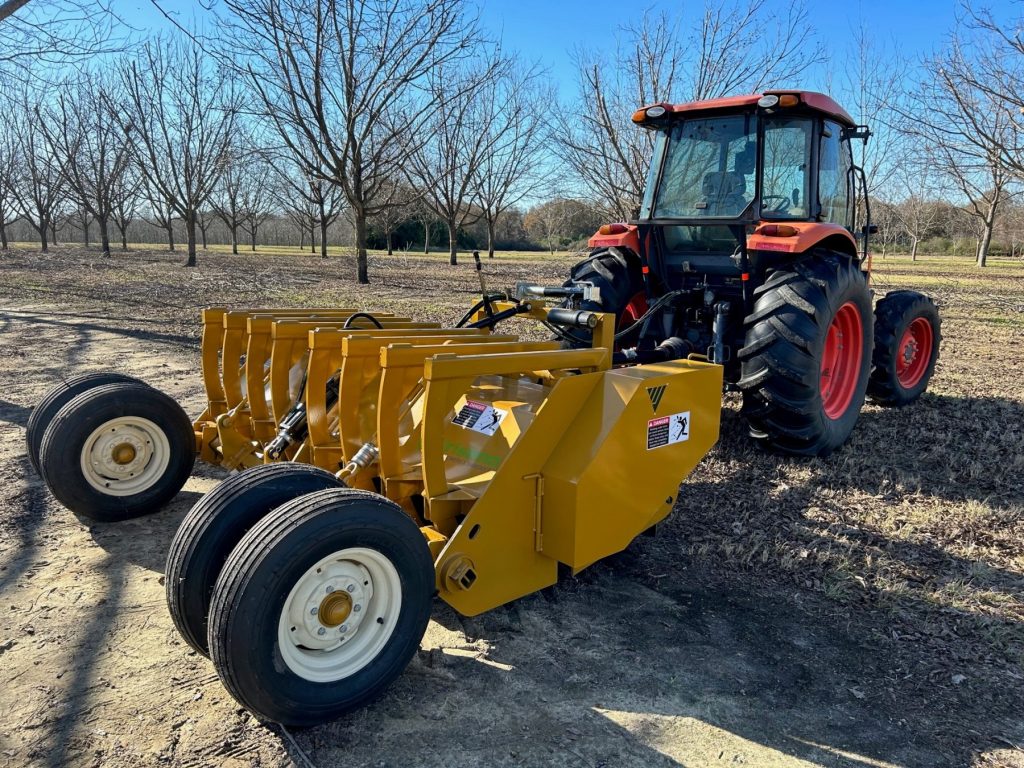
Thanks to Savage Equip., we were able to acquire one of these and tried it out following our hedge pruning. Cost of the shredder is around $30,000, which is not cheap but considerably less expensive than larger equipment that does the same job. This shredder is 8′ wide and is essentially a super heavy-duty flail mower that can shred material up to 5″ diameter. We had it attached to a 100 hp tractor and it chewed through limbs 2.5-3.5″ diameter with no problem. We were able to shred the larger material but for a lot of 5″ material, a little larger tractor (125 hp) would be a better choice and would not load the tractor down quite as much.
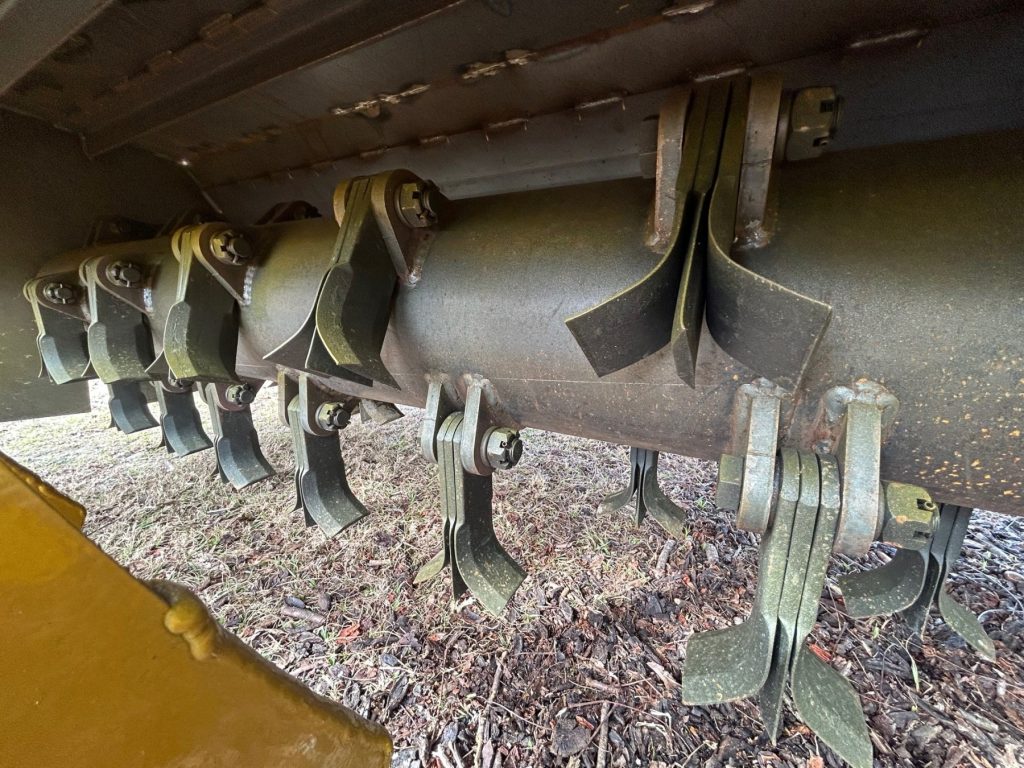
In most hedging jobs, the largest material comes down in the first cut. Subsequent cuttings would not be likely to be larger than 3.5″ in diameter except when you cut behind the original cut. Therefore, I think it will work well for the purpose of chewing up hedge pruned limbs and leaving the shredded material on the orchard floor.
You can see below the shredded material that is left behind.
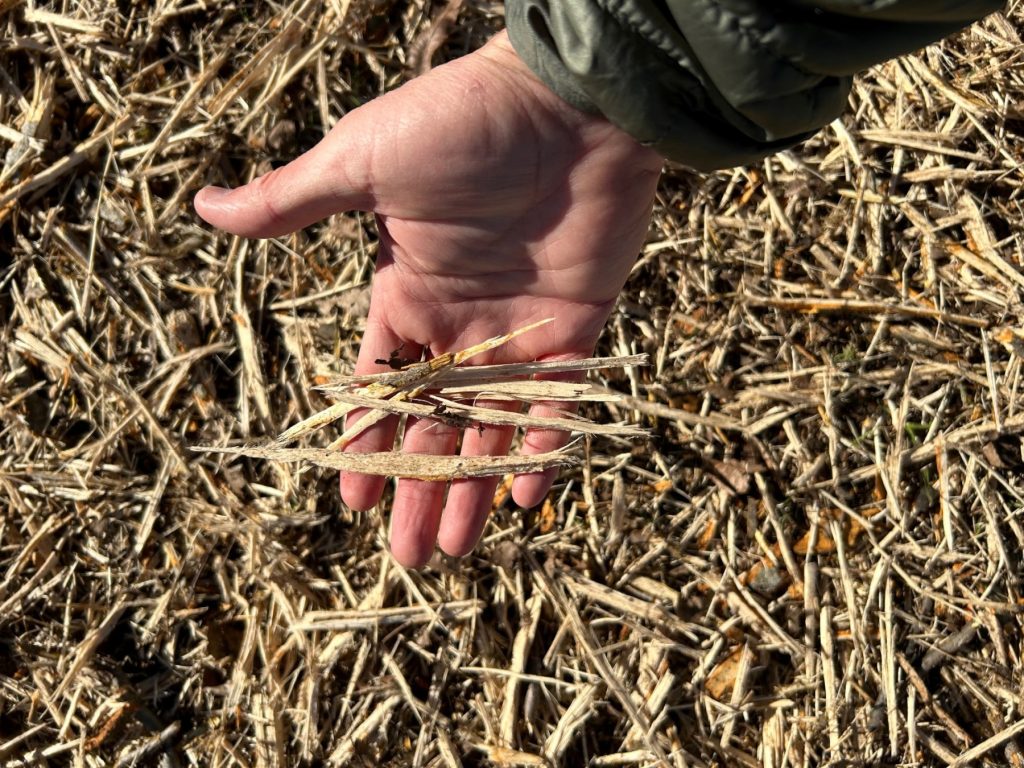
Most of the material is left in 3″ to 6″ thin ribbons of woody material. I believe this will decompose relatively rapidly in our hot, humid climate and not interfere with harvest or operations in the cleaning plant. We will be monitoring changes to the soil over time in these plots and comparing them to changes in plots where limbs are removed. We will be investigating whether or not additional N is needed to account for that used by microbes breaking down the material but because we often apply N in the tree row and similar studies from New Mexico indicate no additional fertilizer was required in the West where shredded limbs were left on the orchard floor, we are hopeful that will be the case here.
